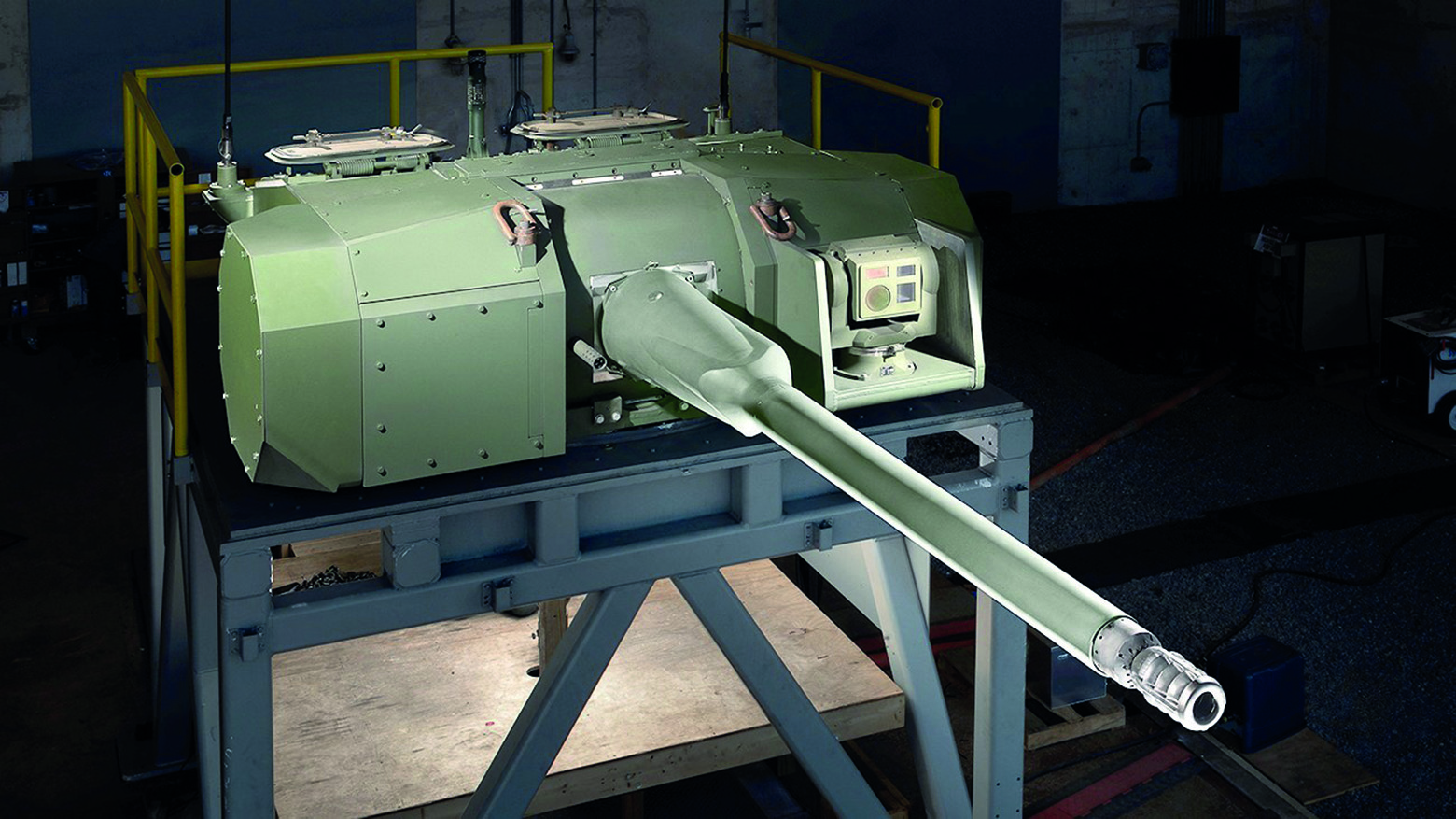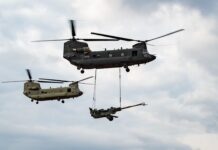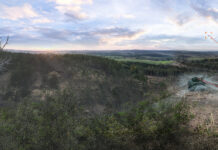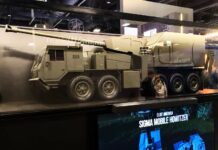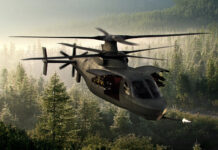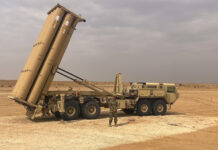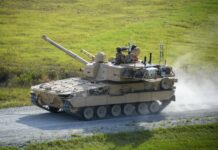The US Army’s Optionally Manned Fighting Vehicle (OMFV) programme seeks to develop and procure a successor to the M2 BRADLEY Infantry Fighting Vehicle (IFV).
The new combat vehicle is intended to have both greater lethality and survivability when compared to the BRADLEY. This is in order to counter future battlefield threats presented adversaries, whether in the field or in dense urban environments.
The programme is currently in Phase Two, the Concept Design Phase. In July 2021, the Army announced the selection of five firms to participate in this 15-month long segment of the OMFV development programme. The competing consortia are led, respectively, by:
- American Rheinmetall Vehicle (ARV)
- BAE Systems
- General Dynamics Land Systems (GDLS),
- Oshkosh Defense
- Point Blank Enterprises
Concept Design Phase
Contrary to common practice, the Army’s December 2020 Request for Proposals (RfP) from industry was light on details. To avoid making unrealistic demands going in, the RfP kept firm requirements to a minimum, and presented a list of nine desired “characteristics” OMFV should have. These characteristics are:
- enhanced Survivability through hardening against fires and blast and reduced risk of detection
- sufficient Mobility to keep pace with the ABRAMS Main Battle Tank (MBT) in combat
- Growth potential for insertion of upgraded or additional systems over the vehicle’s service life (to be achieved through a Modular Open Systems Approach or MOSA architecture)
- Lethality against a broad spectrum of ground and aerial threats
- Weight must permit crossing of 80 per cent of routes and bridges in pacing threat countries
- reduced Logistics burden through advanced diagnostic capabilities and more efficient maintenance capability
- Transportability via all standard air, sea, road and rail transport modes
- Manning requirement limited to a two-person vehicle crew, plus the option for unmanned remote control operation
- Training capabilities embedded on board, and compatible with the Army’s Synthetic Training Environment
During the ongoing Concept Design Phase, the five competitors are developing purely digital designs. Several of them are based on existing vehicles and weapon systems but optimised for future requirements. James Schirmer, deputy director of the Executive Office Ground Combat Systems Programme, said the current initiative enables the Army to evaluate designs as they evolve, and test their operational viability and performance potential through modelling and simulations. “We can run them while they’re still digital, and we can use this technique to avoid costly failures over a test range,” thereby reducing some technical risk during the development programme, Schirmer said.
Subsequent Steps
The Army is also using this phase to formulate more specific technical and capabilities requirements which it will impose as the programme moves forward. The Army plans a minimum of two cycles of requirements and specification updates during the Concept Design Phase. These updates will be preceded by interim detailed assessments of the ongoing designs. “This process allows the Army to make future decisions on the design without overly constricting vendor efforts to innovate,” said Brigadier General Glenn Dean, Programme Executive Officer for Ground Combat Systems.
In October 2021, Brigadier General Dean announced that the first of these interim concept reviews had “recently” been concluded. The information from that review will guide adjustments to the simulation programme and will provide a basis for refining the Army’s set of requirements for the OMFV, He said during the AUSA 2021 exposition in Washington, DC. The first formal OMFV requirements document, known as the A-CDD, is expected to be released soon. The final and binding set of requirements will be formulated after a system functional review at the end of the ongoing 15-month concept design cycle.
Contenders and Trends
Several of the contenders showcased their initial concepts at the October 2021 Association of the United States Army (AUSA) convention. While these vehicles were not prototypes of the eventual OMFV designs, they did provide insight into the general direction the respective firms are looking. It is also becoming increasingly clear that the greatest progression from current IFVs will not manifest in the vehicle chassis or even the weapon systems. The true dynamic will be presented by the onboard sensors and the advanced networking and mission control systems which will turn individual IFV platforms into nodes in a situational awareness network and kill chain. This compound structure will integrate the OMFV with MBTs and other manned and unmanned vehicles, projecting significantly more combat power than the sum of its component parts.
LYNX by Rheinmetall
American Rheinmetall Vehicle has definitively chosen the LYNX KF41 as the point of departure for its OMFV design. A scale model incorporating modifications to customise the LYNX for American requirements was displayed at AUSA 2021. ARV plans to utilise a new, US-designed remotely operated turret mounting a 50mm gun and a variety of anti-tank missiles or COYOTE loitering munition UAVs. New 3rd Generation L3 sights promise to significantly enhance accuracy and engagement range.
When unmanned, the vehicle can be controlled from the ground or another vehicle, or from further back as long as the line of communications is maintained, said Mike Milner, ARV director of business development and strategy. Alternatively, the vehicle can be outfitted with a third crew station from which several robotic vehicles can be simultaneously controlled.
Milner stressed the LYNX’s significant power generation capability, an aspect which will be vital for future upgrades with new sensors, vectronics and energy weapons. He also pointed out that the LYNX, unlike some other baseline contenders, was designed from the very beginning with a MOSA architecture. ARV has assembled a diverse industry team for the OMFV competition, including:
- Raytheon
- L3 Harris
- Textron Systems
- Allison Transmissions
RV-301 by BAE Systems
BAE Systems presented the RV-301, which the company described as a “prototype rolling lab” to study various concepts the firm is considering for the OMFV design. Jim Miller, BAE’s senior director of business development for combat mission systems, emphasised that the vehicle on display did not represent BAE’s ultimate OMFV concept. Miller told reporters that BAE has instructed its engineers to “think outside the box” because the firm doubts any existing platform could be sufficiently modified to meet the Army’s expectations.
The RV-301 presented at AUSA resembles a larger version of the Armored Multi-Purpose Vehicle (AMPV) which BAE Systems designed for the US Army. As displayed, the vehicle was equipped with the MT30 turret produced by Elbit (one of BAE’s major partners for the OMFV programme). A 360 degree situational awareness system, an Active Protection System (APS) and vehicle automation solutions were also installed on the demonstrator. BAE has partnered with Curtiss-Wright Defense Solutions to develop the vehicle’s MOSA suite.
KATALYST by GDLS
General Dynamics Land Systems has still not revealed details of its actual OMFV concept, but presented its KATALYST Next Generation Electronic Architecture (NGEA) on an unmanned demonstrator armoured vehicle. GDLS classifies the KATALYST MOFA as a 5th Generation electronic architecture which will form the core of the OMFV’s operating system. It is designed to integrate a large number of mission systems including:
- communications
- sensors/situational awareness
- fire control
- electronic warfare
- APS
It is also designed to act as an interface with off-board robotic systems to enable effective manned-unmanned teaming, said GDLS’ OMFV programme director, Ray Kiernan. He stressed the high level of artificial intelligence (AI) being designed into the firm’s OMFV concept in order to reduce crew workload. Features include autonomous driving and targeting capabilities. GDLS has so far limited the number of external partners, and has tasked General Dynamics’ own Mission Systems division with providing vectronics and networking/communications/cyber systems. The display vehicle at AUSA featured the AeroVironment SWITCHBLADE loitering munition.
Oshkosh
Oshkosh Defense, which has teamed with Hanwha Defense and Rafael, presented a large graphic of its OMFV concept for the first time at AUSA. The chassis is based on Hanwha’s REDBACK IFV, but incorporates a Rafael SAMSON turret. Other partner firms include Plasan, Pratt Miller and QinetiQ. Being new to the development of large combat vehicles, Oshkosh Defense is relying heavily on its partners for specialised expertise.
LIBERTY by PBE
Point Blank Enterprises (PBE) is maintaining secrecy over its concept, which has been dubbed the LIBERTY platform. PBE’s primary partner is Keshik Mobile Power Systems. Company talking points emphasise the benefits of the vehicle’s distributed redundant hybrid electric drivetrain, exportable electric power and system-wide MOSA. Paul Palmer, PBE’s senior vice president for advanced technology programmes, referred to LIBERTY as a “non-traditional platform” designed to facilitate the insertion of future technologies.
Major Third-Party Components
Some major components have already been determined, regardless of which firm builds the combat vehicle. The Army has chosen the Northrop Grumman/Bushmaster XM913 50mm chain gun as the OMFV’s primary weapon. Utilising interferometric radar for target tracking, the XM913 promises precision accuracy against stationary or moving targets at stand-off range.
In addition to ground targets, the weapon has been demonstrated in both the counter rocket, artillery and mortar (C-RAM) and counter-unmanned aerial vehicle (C-UAV) roles. Munitions options include course-correcting XM1203 Armor Piercing Fin Stabilized Discarding Sabot with Trace (APFSDS-T) as well as XM1204 High Explosive Airburst with Trace (HEAB-T) projectiles. Northrop Grumman cites an effective range of four km, or roughly double the range of the BRADLEY’s 25mm gun. The more powerful gun will significantly enhance the ability to engage peer-level adversaries. Another third-party subsystem is the Wireless Ethernet Backbone Security Network developed by Thales. The firm is currently working on an integration concept for fielding the network on the final OMFV.
Going Forward
The ongoing Concept Design Phase (Programme Phase 2) will continue through the end of fiscal year 2022 (FY22), that is through the end of September 2022. It will be followed by a four-months long interval where the Army will conduct a full and open competition leading up to Programme Phase 3, the Detailed Design Phase. Firms other than the five companies which are currently developing digital concepts will be eligible to compete for Phase 3 contracts. Army leaders have stressed that firms not participating in the current digital design competition are being kept abreast of developments. “The rest of industry will begin to see the direction that we’re shaping that competition, and they’ll see the performance specifications,” Brigadier General Dean stated in October 2021. “They don’t quite have the inside track [as the five current contractors], but if they are following along, they will be ready to pick up and compete.”
Final Phases
The Request for Proposals for Phase 3 (and for the subsequent Phase 4, Prototype Construction and Testing) of the OMFV programme will be issued as early as May 2022. Up to three firms will receive Phase 3 contracts in the second quarter of fiscal year 2023 (FY23). This Detailed Design Phase will run through the end of FY24, and will also rely on digital engineering and testing to optimise designs before investing in physical prototype evaluation. “[We want to] look at the designs as they evolve in real time, and then take those designs and the data that comes with them and plug them into models and simulations so that we can run them while they’re still digital, and we can use that technique to avoid costly failures on a test range,” said James Schirmer in October 2021.
The subsequent Prototyping Phase (Phase 4) will begin in FY25. During Phase 4, each of the three selected contractors will build 12 prototype vehicles, which will be tested by the Army beginning in FY26. Phase 4 will culminate in downselection to a single competitor and award of a Low-Rate Initial Production (LRIP) contract. This Milestone C event initiating Programme Phase 5 (LRIP) is expected in the 4th quarter of FY27. The first operational battalion is expected to receive OMFVs beginning in 2028. The full-rate production decision is expected in FY29.




